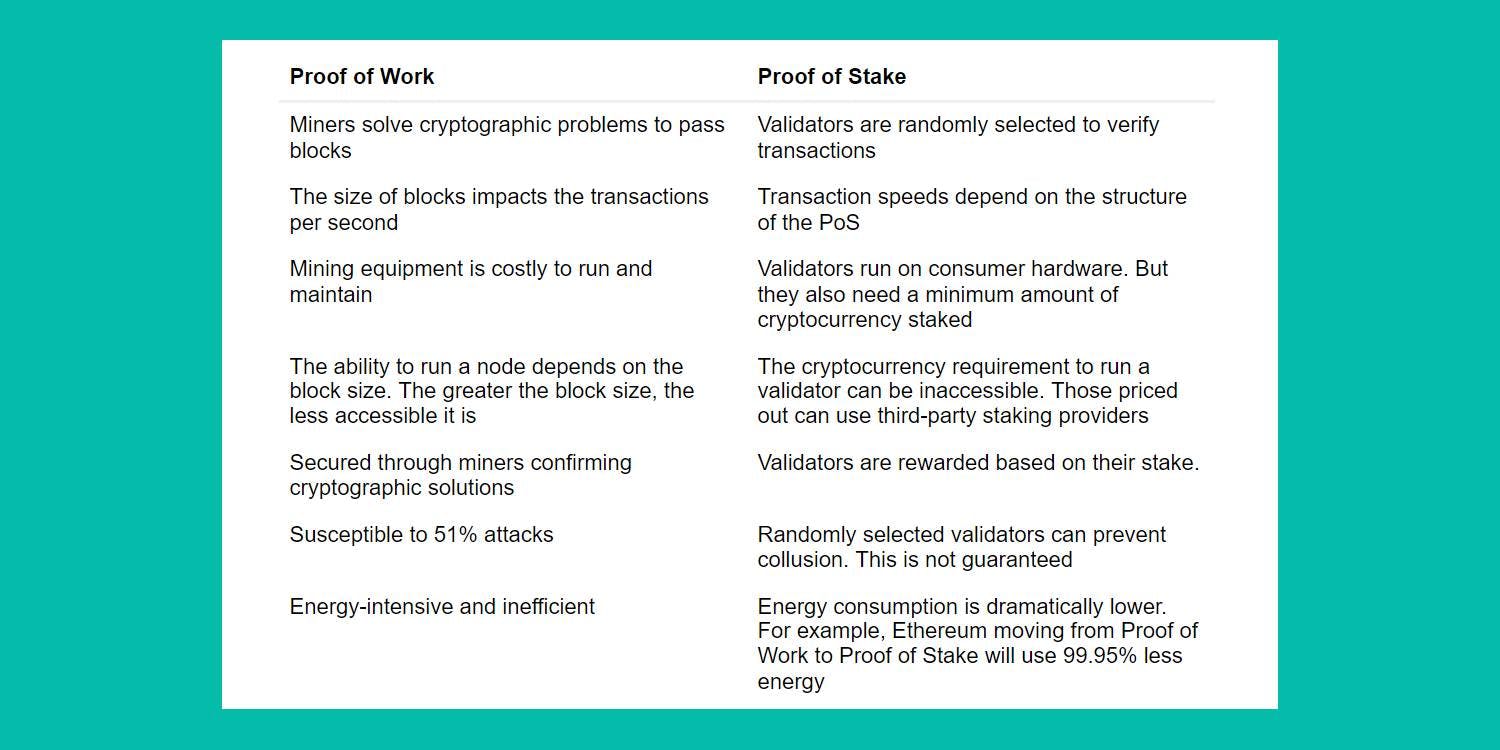Quick summary
Proof of Work is a way to confirm transactions without needing a third party. It works by using a community of computers known as ‘miners’. These miners solve cryptographic problems, and the miner that solves the problem first shares the solution with others. If the other miners confirm the solution, then a new block gets added to the blockchain. This is then repeated.
What is Proof of Work?
Proof of Work uses computers known as 'miners' to pass blocks. A block contains the transaction data made on the blockchain. To pass a block, miners have to solve a complicated cryptographic problem. The miner that solves this problem first shares their solution to the other miners in the network—that way, it gets checked.
If the solution is wrong, then it gets rejected. And if the solution is correct, then a new block gets added to the blockchain. This confirms the transaction activity for that block. For solving the problem, the miner gets rewarded with cryptocurrency and any accrued transaction fees.
The cost of running miners gets costly. That's why miners want to provide correct solutions. When a blockchain grows, like, Bitcoin, more and more miners will compete for rewards. This forces miners to upgrade their hardware. If a miner provides a false solution to the cryptographic problem, they will not earn rewards, and they lose money from the running costs!
Advantages and disadvantages of Proof of Work
Advantages
- Security: Proof of Work blockchains are secured by the miners and nodes validating the activity in the network. A node is not a miner; they just confirm the activity on the blockchain. So, the strength of the blockchain increases with every miner and node added to the network.
- Running a node: For some Proof of Work blockchains, like Bitcoin, anyone can run a node with basic hardware.
- Removal of third parties: Proof of Work blockchains need each node and miner to have their own copy of the blockchain. This lets them independently verify the blockchain’s activity. Because of this, Proof of Work blockchains have eliminated the need for third parties, like banks, from payments.
Disadvantages
- 51% attacks: A 51% attack is when a Proof of Work blockchain has a bad actor that controls a minimum of 51% of the blockchain’s miners. This lets them manipulate transactions and confirm their own solutions to pass blocks.
- Limited transaction per second: A consequence of each node having their own copy of the blockchain is that if the entry requirements for running a node are minimal, then the transactions per second are limited.
- Blocksize: Proof of Work blockchains can increase their transactions per second by increasing the block size. But this makes the requirements for running a node more challenging as it’ll require specialist hardware. This reduces the security of the blockchain as fewer people can verify the transactions.
- Centralization: More miners on the blockchain upgrading their equipment reduces the chances of earning the block rewards. That’s why miners sometimes join up together and share the mining rewards between the group. But this centralizes the blockchain.
- Energy-intensive: With every node and miner confirming the transactions -- even if the solution given by the miner is right -- consumes lots of energy.
Comparing Proof of Work with Proof of Stake
Proof of Work is one type of consensus mechanism. The alternative is Proof of Stake, which we covered in a separate article.
Below we created a table that compares the two:

If you want to read an in-depth comparison, then you can read this article by Rafael Solari.
Further resources
What is a Bitcoin Block? By Blocks Decoded
A visual explanation of how Bitcoin works
Bitcoin’s growing energy problem by the Financial Times
Natural vs Artificial Money and why Bitcoin is the greatest thing to happen for alternative energy.
The untold history of Bitcoin: Enter the Cypherpunks
The Blocksize War: The battle over who controls Bitcoin’s protocol rules
Ready to get started with DeFi?
Argent is a simple, secure, all in one wallet for investing in DeFi
Download Argent